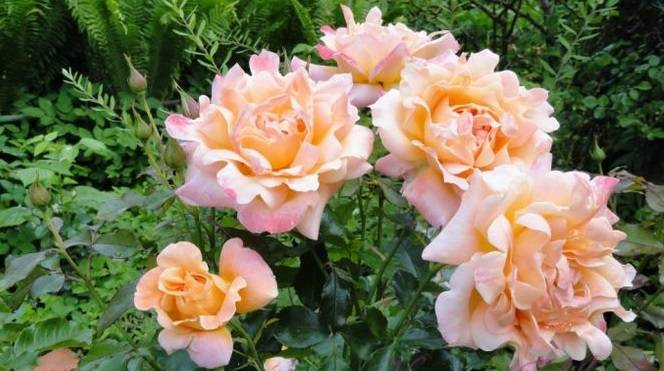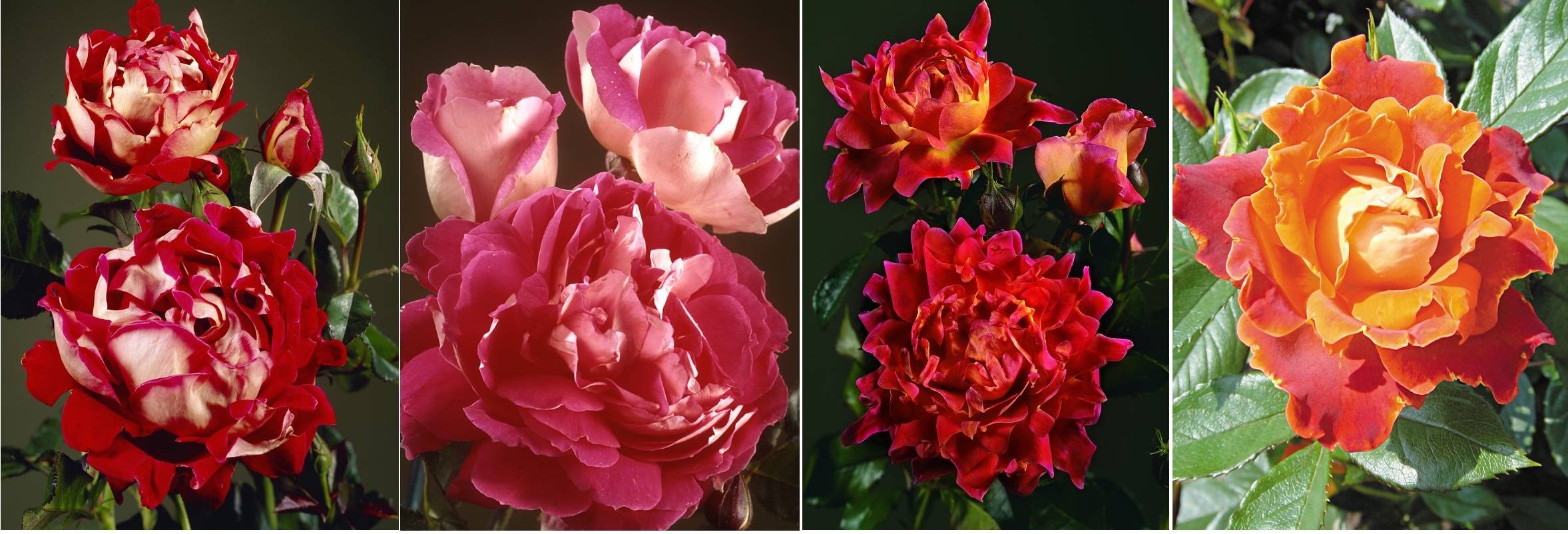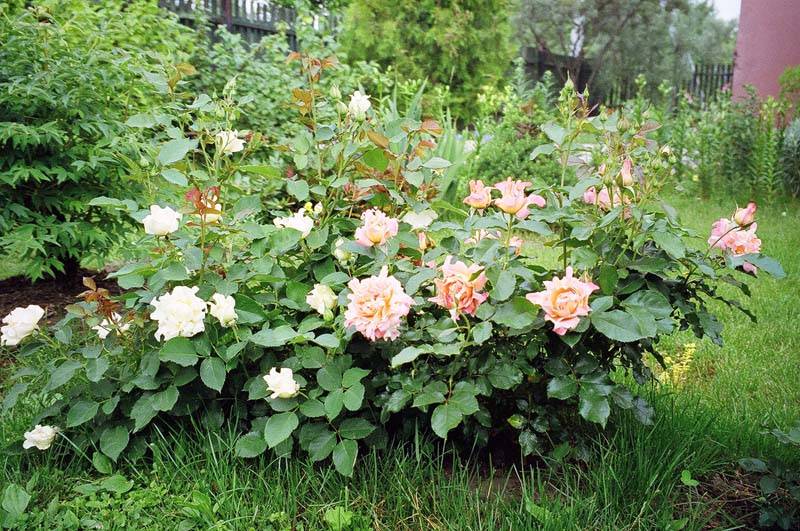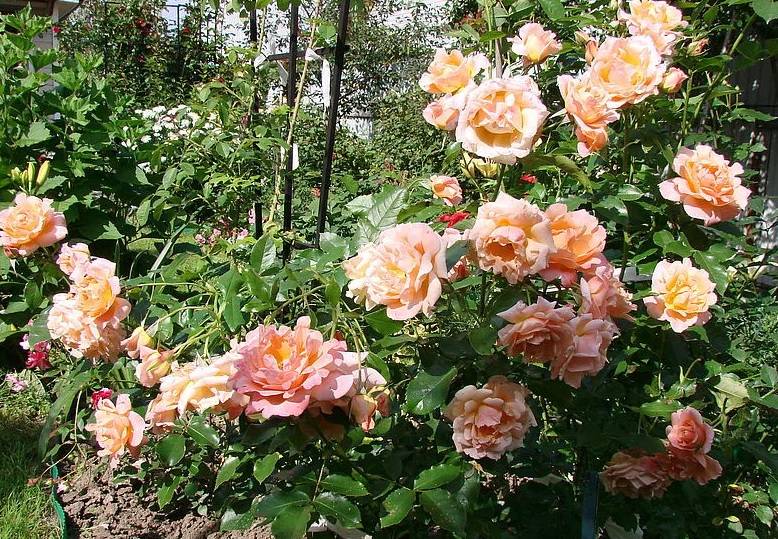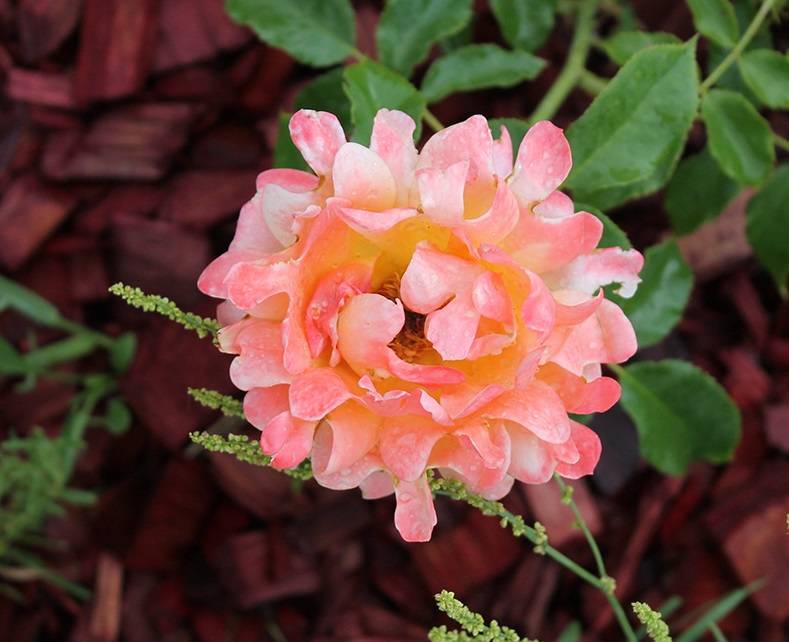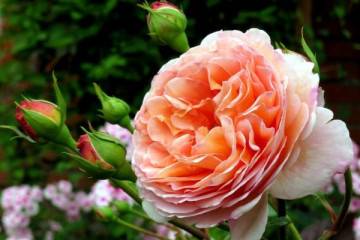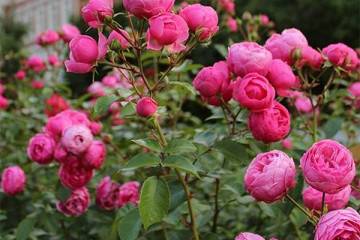Rose Ruffles Dream - description of varietal shrub
Content:
The variety of rose varieties allows every gardener to choose a perennial to his taste. Roughlls Dream looks very unusual, it can become an adornment of any rose garden.
Rose Raffles Dream: description and characteristics
Floribunda Raffles Dream with lacy peach flowers is a relatively young variety. It was bred by Dutch breeders in 2001. Later, other Raffles roses (varieties) were created on its basis:
- Mystic, whose buds are unevenly colored in wine-red shades and have a silvery underside;
- Passion with bright crimson inflorescences, in which the back of the petals is also velvety white;
- Romantic Raffles is carmine red with a pale pink underside of the petals;
- Chocolate Raffles has red-brown flowers with an orange center, apricot-yellow on the back.
In each of these subspecies, the bushes are rather miniature, no more than 60 cm in height and width. Shoots are straight, branched, densely covered with bright green leaves. Terry flowers, consisting of many corrugated petals, are collected in inflorescences of 3-5 pcs., When fully opened, reach 10 cm in diameter.
The benefits of the Ruffles Dream variety include:
- frost resistance;
- good tolerance of precipitation;
- immunity to many diseases.
There are no obvious disadvantages to the plant. Problems are usually associated with a violation of agricultural technology.
How to properly plant in open ground and grow a flower
In order to successfully grow any of the Raffles roses, it is important to plant it correctly. The procedure consists of standard steps, but has its own nuances.
Ruffles roses thrive best as seedlings obtained by cutting or dividing the bush.
The best time for planting is the beginning of autumn. In this case, before the first frost, there should be another 3-4 weeks for the seedling to adapt. Purchased container plants can be replanted throughout the season.
Seat selection
The site needs to be well lit, but shaded from direct sunlight. It is recommended to opt for a small hill with loose and nutritious soil.
How to prepare the soil and flower for planting
The soil is dug up in advance, enriched with minerals and organic matter. The non-viable parts of the roots are removed from the seedling and the cuts are sprinkled with crushed coal.
Planting procedure step by step
Landing in the ground is carried out in a specific sequence. Adhere to the following steps:
- They dig a small hole, measuring 30 × 30 cm, no more than 40 cm deep.
- Drainage is laid at the bottom of the pit and sprinkled with earth.
- The seedling is lowered into the hole, gently spreading the roots.
- The pit is filled up, compacting the soil.
- The rose is watered with settled water.
- The soil around the flower is mulched with humus.
Plant care
Courting Raffles is not that difficult. All of them are unpretentious, and the agricultural technology for growing them is simple.
Watering rules and humidity
Young specimens need watering about 2 times a week. An adult bush is watered less often, focusing on the drying out of the topsoil.
Top dressing and soil quality
With the onset of the new season, rose bushes are fed with nitrogen to gain green mass. Starting from the budding period until the end of the season, complex mineral compositions and organic matter are alternately introduced with an interval of 2-3 weeks.
Pruning and replanting
The compact plant does not require formative pruning. In spring and autumn, it is necessary to remove non-viable and too old shoots from the bush.
Raffle Dream is transplanted in accordance with the described planting rules. In this case, the bush is moved along with an earthen lump around the rhizome.
Features of wintering a flower
Despite its winter hardiness, it is advisable to cover the rose in regions with a harsh and humid climate. Usually spruce branches or non-woven fabric are used for this.
Blooming rose
A feature of Raffles varieties is the ability to re-bloom.
A period of activity and rest
Blooming of these roses lasts from June to autumn frosts. Waves replace each other almost imperceptibly. Even during the rest period, individual lush inflorescences can remain on the bushes.
Care during and after flowering
The flowering bush Raffles Dream is fed while it is resting. Watering is carried out in the evening, preventing moisture from entering the leaves and buds. To prolong flowering, wilting inflorescences are promptly removed.
What to do if it does not bloom
The plant may refuse to bloom if the conditions of care are violated. Also, the problem may lie in the wrong choice of the landing site.
Flower propagation
The easiest way to propagate the Raffles Dream bush is by cuttings. Layering is not suitable, as the shoots of the plant do not reach sufficient length.
Cuttings are cut with a length of 8 cm, making the upper cut straight, and the lower one at an angle of 45⁰. The stalk is placed in the ground in an area shaded from the midday sun. The seedlings are covered with a transparent film, creating greenhouse conditions.
Young plants periodically ventilate, moisturize and loosen the soil around them. They are transplanted to a permanent place after 2 years, not allowing to bloom up to this point.
Diseases, pests and ways to control them
Rose Raffles, if neglected, may undergo powdery mildew and black spot. Fight ailments with proven fungicides.
Of the pests, aphids and sawfly are dangerous. You can get rid of them by manually removing and using folk remedies. If this does not help, then they resort to insecticide treatment.
For those who adhere to the prescribed grooming rules, it will not be difficult to grow Raffles Dream. Patterned inflorescences of this unpretentious rose will decorate any home and garden.
